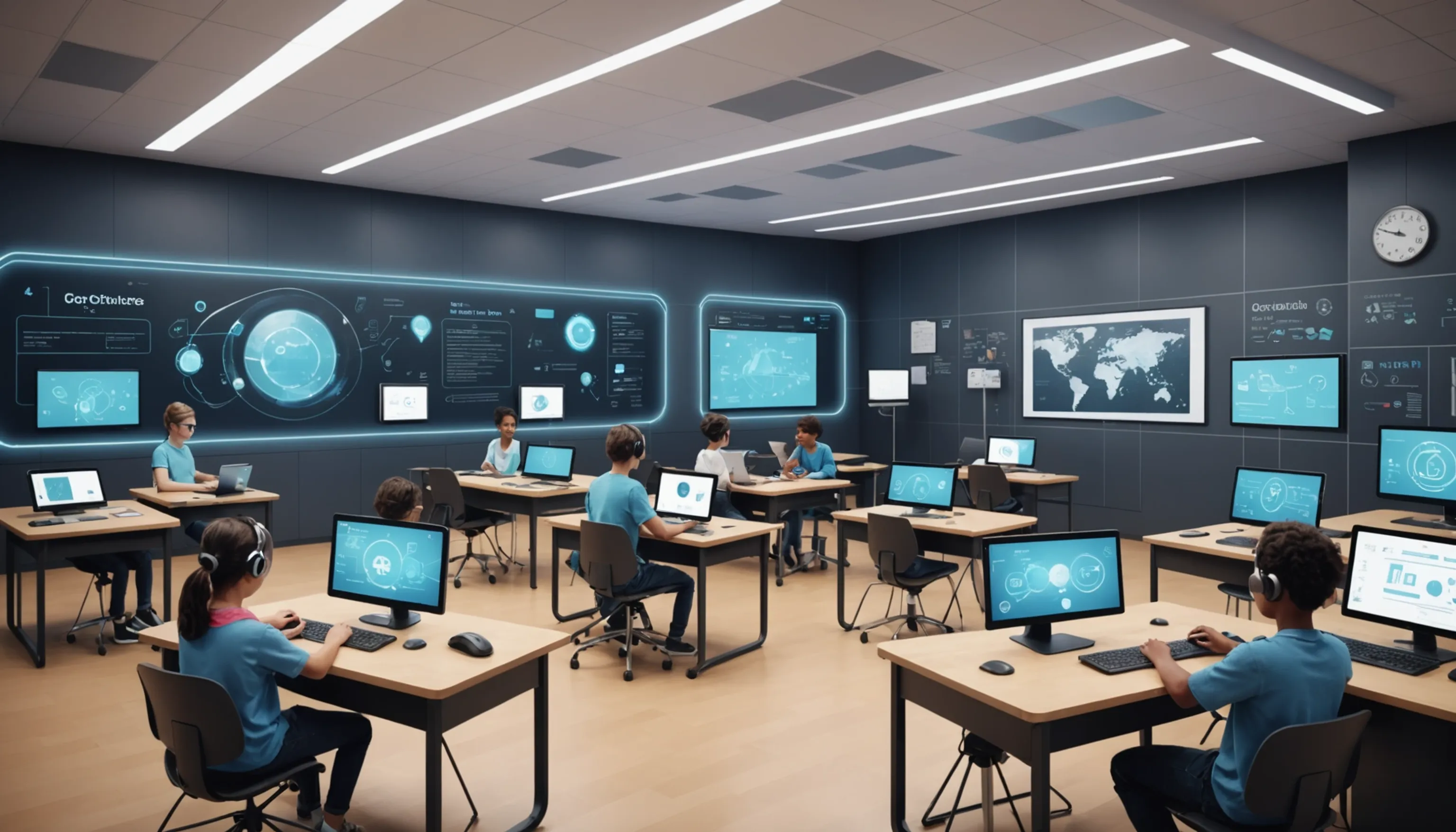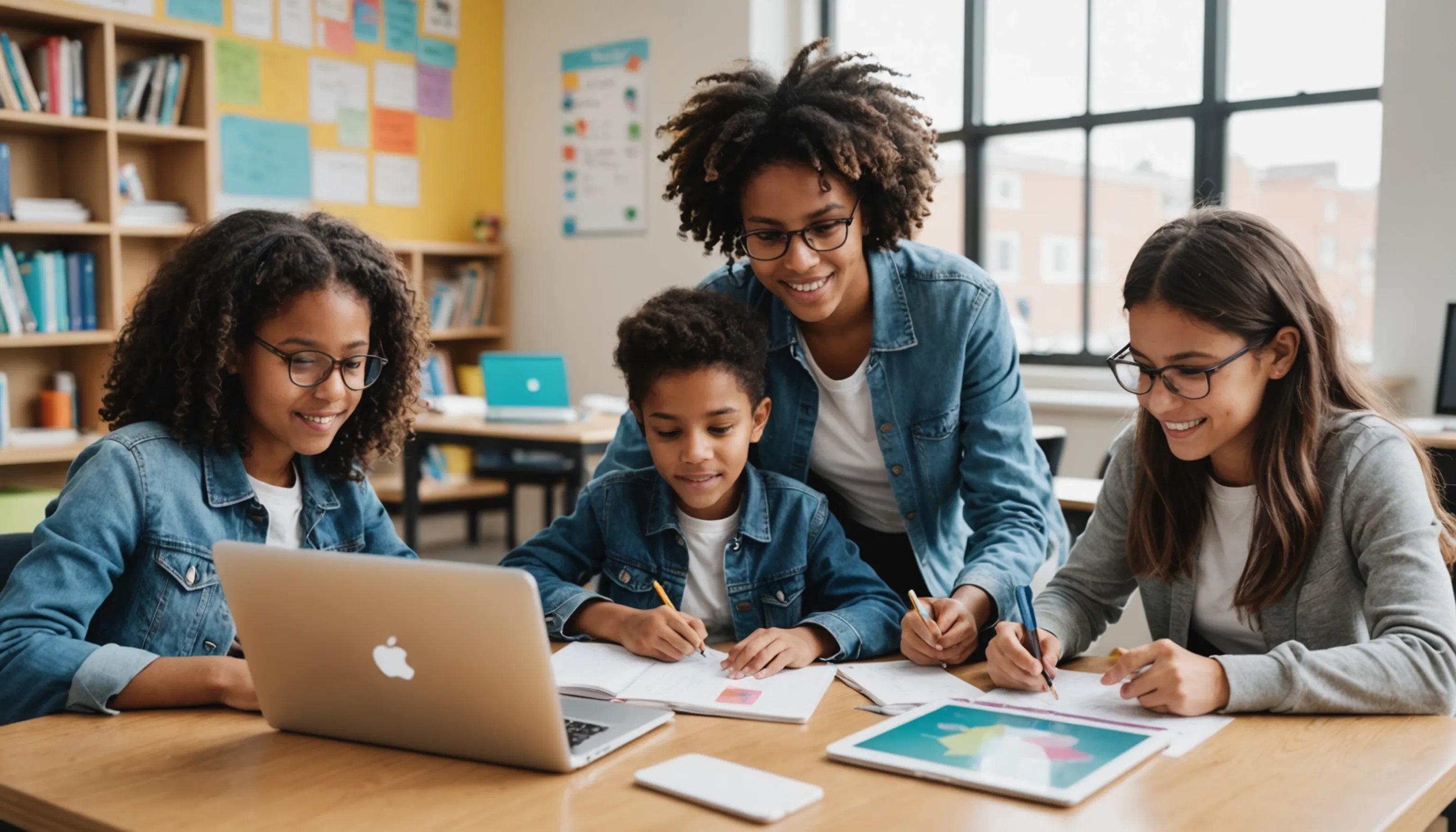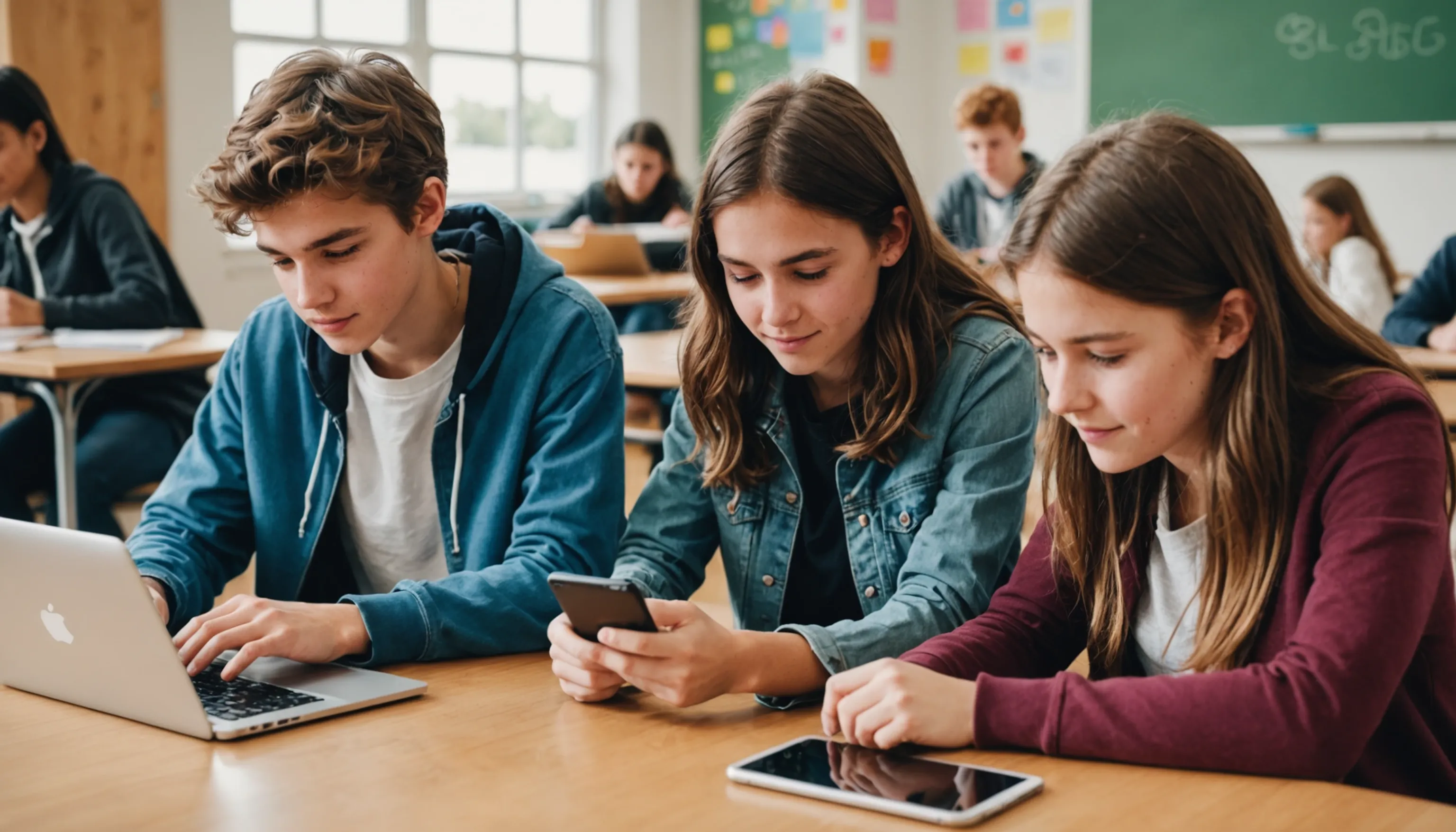Impact of Technology on the Future of Learning
 HvWHenry van Wagenberg
HvWHenry van Wagenberg
The Impact of Technology on the Future of Learning
The impact of technology on the future of learning is profound and far-reaching. As digital tools become integral to education, they transform traditional teaching methods and create new opportunities for students.
Technology facilitates personalized learning experiences, allowing students to learn at their own pace. Online platforms provide access to diverse resources, enhancing engagement through interactive content. Furthermore, educators can utilize analytics to tailor instruction to individual needs, ensuring that every student has the support necessary to succeed.
How Technology is Reshaping Education
Technology is reshaping education in multiple ways, fundamentally altering how students learn and teachers instruct. One significant change is the incorporation of online learning platforms, which provide flexible options for students to access courses and materials from anywhere in the world. This flexibility is particularly beneficial for busy teens who may have extracurricular commitments or those who thrive in self-paced learning environments.
Additionally, technology enhances collaboration among students through tools such as video conferencing and shared online workspaces. These tools allow for real-time communication and teamwork, which are critical skills in today's workforce. As a result, students are not only absorbing information but also developing essential soft skills.
Moreover, the use of interactive technologies, such as smartboards and educational apps, makes learning more engaging and dynamic. These tools encourage students to participate actively in their education, making lessons more memorable.
The integration of artificial intelligence and data analytics in education further personalizes the learning experience. By analyzing student performance, educators can identify strengths and weaknesses, tailoring instruction to meet the unique needs of each learner.
Overall, technology is not just a supplementary tool; it's a driving force in modern education, fostering an environment where students can thrive academically and socially, preparing them for future challenges.
The Role of Online Learning Platforms
Online learning platforms play a pivotal role in transforming education by providing diverse, accessible, and flexible learning opportunities. These platforms, such as Coursera, edX, and Khan Academy, offer a range of courses that cater to various subjects and interests, enabling students to learn at their own pace from the comfort of their homes.
One of the most significant advantages of online learning platforms is their ability to accommodate different learning styles. Visual learners can benefit from video lectures, while auditory learners can engage with podcasts or live discussions. This adaptability makes education more inclusive, allowing students to grasp concepts in ways that resonate with them.
Furthermore, these platforms often provide access to expert instructors and industry professionals, enriching the learning experience. Students can interact with educators through forums, live Q&A sessions, and personalized feedback, fostering a sense of community and support.
Another essential aspect of online learning platforms is the wealth of resources available. Students can access e-books, research articles, and interactive tools that enhance their understanding of complex topics. This abundance of information encourages independent research and critical thinking.
Finally, the convenience of online learning platforms prepares students for a future where digital skills are increasingly vital. As technology continues to evolve, familiarity with these platforms equips students with the tools necessary for lifelong learning and adaptability in an ever-changing job market.

The Importance of Digital Literacy
Digital literacy is becoming increasingly important in today's technology-driven world. It encompasses the skills needed to effectively navigate, evaluate, and create information using digital technologies. For students, being digitally literate means more than just knowing how to use a computer; it involves critical thinking and the ability to discern credible sources from unreliable ones.
In the classroom, digital literacy empowers students to engage with various learning materials, from interactive e-books to online research databases. This access not only enhances their understanding of subjects but also prepares them for future academic challenges. Students who are digitally literate can efficiently locate and utilize resources, which is essential for successful project completion and independent study.
Moreover, digital literacy is vital for fostering communication and collaboration. With the rise of remote learning and teamwork, students must be adept at using digital tools like email, video conferencing, and collaborative platforms. These skills are not only beneficial for their current education but are also crucial for future employment, as many employers seek candidates with strong digital competencies.
Additionally, digital literacy promotes responsible online behavior. Understanding issues such as online privacy, digital footprints, and cyberbullying is essential for students to navigate the digital landscape safely. By fostering digital literacy, educators equip students with the knowledge and skills necessary to thrive in an increasingly interconnected world, ensuring they are prepared for the challenges and opportunities that lie ahead.
Benefits of Technology in the Classroom
The benefits of technology in the classroom are numerous and impactful. First, it enhances student engagement through interactive tools like smartboards and educational apps, making learning more enjoyable. Additionally, technology provides access to a vast array of resources, allowing students to explore topics in depth. Personalized learning experiences are also made possible, as educators can tailor lessons to meet individual needs. Moreover, technology fosters collaboration among students through online platforms, promoting teamwork and communication skills. Overall, integrating technology into education prepares students for a digital future while enriching their learning experiences.
Enhanced Engagement and Interactivity
Enhanced engagement and interactivity are two of the most significant benefits of incorporating technology into the classroom. Traditional teaching methods often struggle to capture students' attention, especially in an age where distractions are abundant. However, technology offers innovative ways to transform passive learning into an interactive experience.
One of the primary ways technology fosters engagement is through the use of interactive multimedia. Tools such as videos, simulations, and educational games can make complex subjects more relatable and enjoyable. For instance, science concepts can be illustrated through virtual labs, allowing students to conduct experiments in a safe, controlled environment. This hands-on approach not only stimulates interest but also deepens understanding.
Moreover, technology enables real-time feedback and assessment, which is crucial for maintaining engagement. Students can participate in live polls or quizzes during lessons, allowing them to see their progress immediately. This instant feedback encourages a growth mindset, as students can identify areas for improvement and adjust their learning strategies accordingly.
Collaboration is another vital aspect of enhanced engagement. Digital platforms facilitate teamwork, enabling students to work together on projects, share ideas, and develop critical communication skills. Through tools like discussion boards and collaborative documents, students can engage in discussions beyond the classroom walls, enriching their learning experience.
Ultimately, the integration of technology in education creates a more dynamic and engaging learning environment. By fostering interactivity, educators can inspire students to take an active role in their education, leading to improved motivation and academic success.

Access to a Wealth of Resources
Access to a wealth of resources is one of the most compelling advantages of integrating technology into the classroom. With the internet at their fingertips, students can explore a vast array of information and educational materials that were previously unavailable or difficult to obtain. This access empowers learners and enriches their educational experience.
Here are some key benefits of having access to diverse resources through technology:
- Diverse Learning Materials: Students can find articles, videos, e-books, and podcasts on virtually any subject, catering to different learning styles.
- Global Perspectives: Online resources provide insights from around the world, enabling students to understand various cultures and viewpoints.
- Up-to-Date Information: Digital resources are often more current than traditional textbooks, allowing students to engage with the latest research and trends.
- Support for Differentiated Learning: Teachers can easily find resources that cater to various skill levels, ensuring that all students are challenged appropriately.
- Collaborative Learning: Technology facilitates access to shared resources, enabling students to work together on projects and learn from one another.
Moreover, technology allows teachers to curate and organize these resources effectively. By creating digital libraries or using platforms like Google Classroom, educators can streamline access to materials that complement their lessons.
Overall, the ability to access a wealth of resources through technology not only enhances student learning but also prepares them for a world where information is abundant and readily available.
Personalized Learning Experiences
Personalized learning experiences are revolutionizing education, allowing students to learn in ways that suit their individual needs and preferences. Technology plays a crucial role in facilitating this tailored approach, enabling educators to design lessons that address various learning styles and paces.
One of the primary ways technology fosters personalized learning is through adaptive learning systems. These platforms analyze student performance and adjust content accordingly, ensuring that learners are neither bored by repetition nor overwhelmed by difficulty. For example, programs like DreamBox and IXL provide customized math practice based on a student's strengths and weaknesses.
Furthermore, technology provides a variety of resources that cater to different learning preferences:
- Visual Learners: They can benefit from videos, infographics, and interactive simulations that illustrate concepts effectively.
- Auditory Learners: Podcasts and audiobooks offer engaging ways to absorb information.
- Kinesthetic Learners: Virtual labs and interactive apps allow these students to learn through hands-on experiences.
Additionally, personalized learning fosters student agency. By allowing students to choose topics or projects that interest them, educators can ignite a passion for learning. This sense of ownership encourages students to take responsibility for their education, leading to higher motivation and engagement.
In summary, the integration of technology in education allows for personalized learning experiences that cater to individual needs. This approach not only enhances academic achievement but also prepares students for lifelong learning in an increasingly diverse and dynamic world.
Challenges and Considerations
While technology offers numerous benefits in education, it also presents several challenges and considerations that educators must address. One significant concern is the digital divide, where disparities in access to technology can lead to inequities among students. Not all students have the same level of access to devices and reliable internet, which can hinder their ability to engage fully in digital learning environments.
Another challenge is the potential for distraction. With social media and games readily available, students may find it difficult to stay focused during lessons. Educators need to implement strategies to minimize distractions and keep students engaged.
Additionally, the reliance on technology can lead to a decrease in traditional skills, such as handwriting and critical thinking. It's essential for educators to strike a balance between using technology and fostering essential skills necessary for students' overall development.
Screen Time and Student Health
As technology becomes increasingly integrated into education, concerns about screen time and its impact on student health are growing. While digital tools can enhance learning, excessive screen time can lead to several physical and mental health issues that educators and parents must address.
One of the primary concerns is the effect of prolonged screen time on physical health. Extended use of devices can lead to issues such as eye strain, headaches, and poor posture. The American Academy of Pediatrics recommends that children and teenagers take regular breaks from screens, practicing the 20-20-20 rule: every 20 minutes, look at something 20 feet away for at least 20 seconds.
Mental health is another critical area of concern. Studies indicate that excessive screen time, particularly on social media, can contribute to feelings of anxiety and depression among teenagers. The constant comparison to others and exposure to cyberbullying can exacerbate these feelings, making it essential for parents and educators to monitor and discuss screen usage with students.
Furthermore, balancing screen time with physical activity is crucial. Encouraging students to engage in outdoor activities and hobbies can help combat the negative effects of too much time spent in front of screens. By promoting a healthy balance, educators and parents can harness the benefits of technology while safeguarding student well-being.
Equity and Access to Technology
Equity and access to technology are critical issues in modern education, particularly as digital tools become essential for learning. While technology can enhance educational opportunities, disparities in access can lead to significant inequalities among students. Addressing these disparities is crucial for ensuring that all students have the resources they need to succeed.
One major factor contributing to inequity is the digital divide, which refers to the gap between those who have easy access to the internet and technology and those who do not. Students from low-income families may lack reliable internet access or appropriate devices, hindering their ability to participate in online learning and complete assignments. According to a report from the Pew Research Center, nearly 30% of lower-income households with school-age children lack high-speed internet, which severely limits their educational opportunities.
Furthermore, even when technology is available, the quality of access can vary. Schools in affluent areas often have better resources, including updated devices and software, while underfunded schools may struggle to provide basic technology. This disparity can affect the quality of education students receive, reinforcing existing inequalities.
To promote equity, schools and policymakers must prioritize initiatives that increase access to technology for all students. This includes providing affordable internet options, ensuring that schools are equipped with modern devices, and offering training for students and families to improve digital literacy. By addressing these issues, we can create a more equitable educational landscape that empowers all students to thrive in a technology-driven world.
Balancing Technology and Traditional Learning
Balancing technology and traditional learning is a crucial consideration in modern education. While technological advancements offer innovative ways to enhance learning, it is essential to recognize the value of traditional methods that have stood the test of time. Striking the right balance can create a more effective learning environment that caters to diverse student needs.
Traditional learning methods, such as face-to-face instruction, hands-on activities, and printed materials, provide essential benefits. These approaches foster interpersonal skills, encourage critical thinking, and promote active participation in class discussions. For instance, group projects and direct teacher interactions allow students to develop communication and collaboration skills that are vital in today’s workforce.
On the other hand, technology offers unparalleled access to information and resources, enabling personalized learning experiences. With online platforms, students can explore topics at their own pace, engage with interactive content, and collaborate with peers globally. However, over-reliance on technology can lead to disengagement and a lack of fundamental skills, such as critical thinking and problem-solving.
To achieve a balanced approach, educators should integrate technology thoughtfully alongside traditional practices. This can involve using technology to complement, rather than replace, direct instruction. For example, teachers can utilize digital tools for research while maintaining classroom discussions to deepen understanding.
Ultimately, a balanced approach to education ensures that students benefit from the advantages of both technology and traditional learning methods, preparing them for success in a rapidly changing world.
